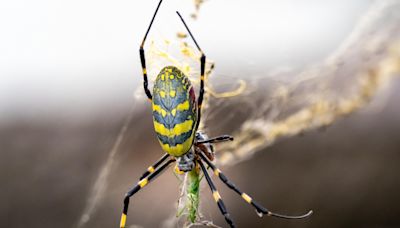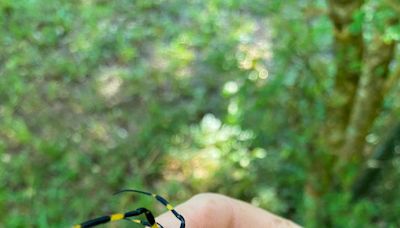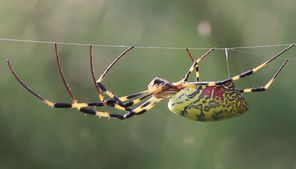Search results
Feb 18, 2021 · In her spider sculptures, both beautiful and monstrous, she gave form to the deepest human needs and desires. Louise Bourgeois’ monumental spider sculptures are her best-known works. She began ...
Spider. Spider is a sculpture by Louise Bourgeois. [1] It was executed in 1996 as an edition of a series entitled Cells [2] and cast in 1997; bronze with a silver nitrate patina, with the first of the edition being steel. [3] The spider itself is made of bronze, whereas the cage is made of steel. [2]
- Bronze
Maman. (sculpture) Maman (1999) is a bronze, stainless steel, and marble sculpture in several locations by the artist Louise Bourgeois. The sculpture, which depicts a spider, is among the world's largest, measuring over 30 ft high and over 33 ft wide (927 x 891 x 1024 cm). [1] It includes a sac containing 32 marble eggs and its abdomen and ...
- Sculpture, Stainless Steel, Bronze, Marble
Louise Bourgeois, ‘Spider/Araignée’, in ‘Louise Bourgeois: recent works’, exh cat, Capc Musee d’art comtemporain de Bordeaux, Bordeaux, and Serpentine Gallery, London, 1998, p 28 When I was growing up, all the women in my house were using needles. I’ve always had a fascination with the needle, the magic power of the needle.
Made when Bourgeois was 95 years old, The Waiting Hours is a vision of approaching mortality. But even as they darken, the 12 skies express the consolations of geometry and restoration. The eight fabric sections that form each sky create a radial, web-like structure, recalling the reparative work of the spider-mother that appears in Spider 1997.
People also ask
Why did Louise Bourgeois create spider sculptures?
What is Louise Bourgeois Spider?
What are Bourgeois' 'Maman' spiders?
When did Bourgeois create spiders?
As a young girl, Louise worked in the family business by drawing in the missing parts of the tapestries that had to be rewoven, and usually the bottoms of the tapestries were worn the most. So Louise became an expert of drawing feet. All the cells deal with this idea of memory. Louise had this fear of getting rid of anything.



